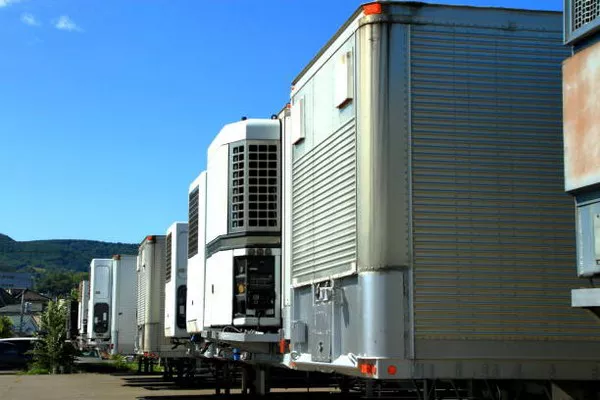Electric generators play a fundamental role in modern society by converting mechanical energy into electrical energy. They are essential in providing backup power, enabling remote operations, and supporting various industrial processes. To grasp the significance and mechanics of electric generators, it’s vital to delve into their workings, types, applications, and future trends.
Introduction to Electric Generators
An electric generator, often referred to simply as a generator, is a device that converts mechanical energy into electrical energy through the principles of electromagnetic induction. This process was first discovered by Michael Faraday in the early 19th century and laid the foundation for the development of modern generators.
Working Principle
The fundamental working principle of an electric generator is electromagnetic induction. According to Faraday’s law of electromagnetic induction, a voltage is induced in a conductor when it moves through a magnetic field. Generators typically consist of a rotor (the moving part) and a stator (the stationary part). The rotor rotates within a magnetic field produced by the stator, causing a flow of electrons and thus generating electricity.
Components of an Electric Generator
Rotor: The rotor is the rotating component of the generator. It consists of a shaft and conductors (wires or coils) wound around an iron core. When the rotor rotates, it induces a magnetic field.
Stator: The stator is the stationary part surrounding the rotor. It contains coils of wire arranged around the rotor. As the rotor spins, the magnetic field cuts across the stator coils, inducing an alternating current (AC) voltage.
Prime Mover: The prime mover provides the mechanical energy required to rotate the rotor. Common prime movers include steam turbines, gas turbines, diesel engines, and water turbines.
Voltage Regulator: This component regulates the output voltage of the generator to maintain it within a specified range, ensuring stable electrical power.
Cooling System: Generators produce heat during operation, necessitating cooling systems to prevent overheating. This can involve air or liquid cooling methods.
Types of Electric Generators
Electric generators come in various types, each suited for specific applications and environments. The primary classification is based on the type of current they produce (AC or DC) and the method used to generate electricity.
AC Generators: Alternating current (AC) generators are the most common type. They produce alternating current where the direction of current flow reverses periodically. AC generators are widely used in residential, commercial, and industrial settings due to the ease of voltage transformation and transmission.
DC Generators: Direct current (DC) generators produce a constant voltage and current flow in one direction. While less common in modern applications compared to AC generators, they are still used in specific applications like battery charging and certain industrial processes.
Classification by Application:
Portable Generators: These are small, versatile generators used for powering tools, appliances, and providing backup electricity in residential settings.
Standby Generators: Installed permanently and automatically kick in during power outages, ensuring continuous power supply for critical systems like hospitals or data centers.
Prime Power Generators: Used as the main source of electricity in areas without access to a centralized power grid.
Industrial Generators: Heavy-duty generators used in industries like mining, oil and gas, and construction to power large machinery and equipment.
Classification by Power Source:
Diesel Generators: Commonly used for backup power due to their reliability and fuel availability.
Gas Generators: Suitable for applications where natural gas or propane is readily available.
Solar Generators: Convert sunlight into electricity using photovoltaic panels.
Wind Generators: Convert wind energy into electricity using turbines.
Applications of Electric Generators
The versatility of electric generators enables their use across a broad spectrum of applications:
Backup Power: Generators are crucial for providing backup electricity during power outages, ensuring continuity of operations in hospitals, data centers, and homes.
Remote Power Supply: In remote areas without access to the grid, generators serve as the primary source of electricity for communities, construction sites, and telecommunications infrastructure.
Industrial Use: Large industrial generators power heavy machinery, construction equipment, and manufacturing processes.
Transportation: Electric generators are integral components of hybrid and electric vehicles, where they charge batteries and power electric motors.
Renewable Energy Integration: Generators play a role in renewable energy systems by providing backup power during periods of low renewable energy production.
Future Trends and Innovations
The field of electric generators continues to evolve with advancements in technology and changing energy demands. Some notable trends and innovations include:
Increased Efficiency: Ongoing efforts to improve generator efficiency through advanced materials, design optimizations, and better control systems.
Hybrid Systems: Integration of generators with renewable energy sources like solar and wind to create hybrid power systems that combine reliability with sustainability.
Smart Grid Integration: Generators are becoming part of smart grid systems that optimize electricity generation, distribution, and consumption for improved efficiency and reliability.
Energy Storage Solutions: Coupling generators with energy storage technologies like batteries to enhance grid stability and enable smoother integration of renewable energy sources.
Remote Monitoring and Control: Utilization of IoT (Internet of Things) technologies for remote monitoring, predictive maintenance, and efficient operation of generators.
SEE ALSO Can You Run a Generator in the Rain? Safety and Best Practices
Conclusion
Electric generators are indispensable devices that convert mechanical energy into electrical energy, providing power for various applications ranging from residential backup to industrial operations. Understanding the workings and classifications of generators is essential for optimizing their use and integrating them into modern energy systems. With ongoing technological advancements and the push toward sustainable energy solutions, electric generators will continue to play a vital role in shaping the future of power generation and distribution.

